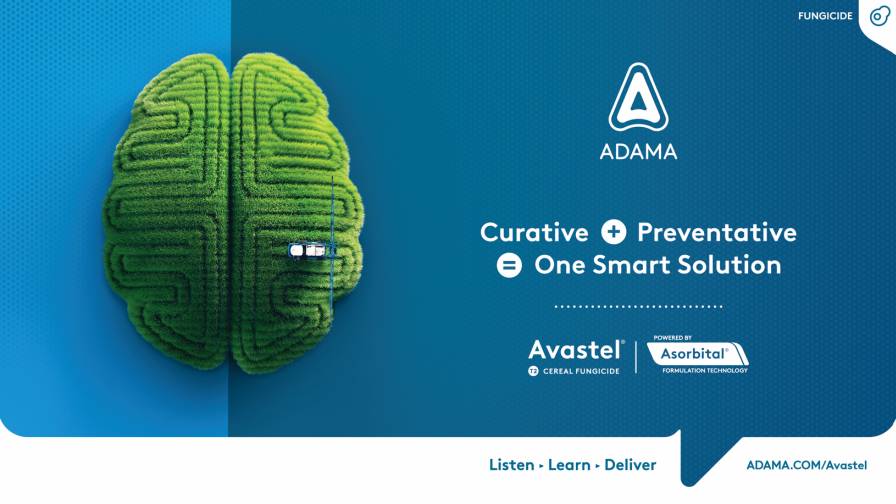US Regulatory Update
The parties on all sides of agriculture are acutely aware that we’re in the midst of a critical time of policy development and public opinion. With global population over the next 40 years expected to grow to more than nine billion, and U.S. growers expected to be a key to ensuring an adequate supply of safe and affordable food will be available, the stakes are high.
Unfortunately, public trust in recent years has turned against domestic agriculture, while spokespeople for the “slow and local” food have worked to make a case that it’s possible for all growers to push aside modern agriculture practices and still feed the world. Against this backdrop, a new farm bill will be constructed for 2012 to set policy that will have far reaching implications for those who will inhabit the planet in 2050.
Perhaps it’s no surprise then that with so much in the balance, CropLife America has reached funding levels from its supporting membership at historic highs for the organization. Better yet, after working through a significant reorganization, the organization finds itself in a position to fully engage regulators, the media and the public at large in critical discussions about the future of food production.
About to enter his second term as the Chairman of CropLife America, Bill Buckner, president and CEO of Bayer CropScience LP, says that the organization is in a great place now. “It’s restructured to bring focus to our primary issues,” explains Buckner. “The executives and staff are able to do what they do best — dealing with stakeholders and shaping our message. The people we have are charged with a mission — they’re less defensive and more offensive on issues.”
CropLife America President Jay Vroom says it’s not just CropLife America staff, but improved cooperation and camaraderie between themselves and CropLife International, RISE (CropLife America’s turf/specialty product affiliate) and other ag associations in the Beltway, including The Fertilizer Institute, the Agricultural Retailers Association and the American Seed Trade Association.
“We definitely have CropLife America as focused as we have ever been,” says Vroom.
Modern Agriculture Message
For most of the first decade of the 21st century, CropLife America primarily focused on matters of policy and legislation, while the public’s trust in U.S. farmers was holding steady. In recent years, the rise against U.S. farming practices and the call for “slow and local” farming practices to be employed has put public trust at odds with American producers.
Vroom traces this recent battle for the hearts and minds of the public back to 2008 with the “mostly perception-driven food crisis,” he says, “which gave a platform for our critics to become darlings of the mass media in a way that could not have happened otherwise.”
The broad brush of the activist portrayal of modern agriculture as unsustainable — culminating in the highly publicized movie Food Inc. — is proving to be a double edged sword. Virtually everyone in the food production channel was indicted in the documentary, but it served to point out the need for every segment of agriculture to speak out in as singular a voice as possible.
“We all are under assault because the confidence of the American consumer has been beaten back,” says Vroom. “There’s a collective need for all of us engaged in agriculture to communicate a ‘modern agriculture’ message. And that includes the 3% to 4% classified as organic — many are using modern technology and have very little use for 100-year old methods.
“This movement has allowed all of us to pull together,” continues Vroom. “It’s not just crop groups — we are talking a lot with animal ag folks, something I always thought was a missed opportunity. This is a very real threat to the science and technology basis of what American farmer do — produce safe, affordable and abundant food, fiber and renewable fuel. This threat has pulled us together like never before, and hopefully just in time.”
Buckner says that associations are focusing specifically on where they can find agreement on issues. “We want to keep it simple — let’s look at a list of 20 issues and pick out the four or five on which we can completely agree, then get everyone on board and really work on them.
“We need to build coalitions and really get out of our silos and find common ground,” he continues. “Industry associations that work independently and send a single voice are not getting anywhere.”
In addition to coalition building, CropLife America is working to get the positive message out on modern agriculture through its own educational efforts. In July, it hosted its inaugural national policy conference, “Modern Agriculture: Exploring its Relationship with Technology, Science & Society,” which brought together national experts in the fields of agriculture, food safety and security to offer their perspectives on issues facing modern agriculture, and how they will impact the next farm bill.
Earlier this year, the association launched its new Web site at www.CropLifeAmerica.org that puts the modern agriculture discussion front and center, and offers a variety of information geared to frequent users, including sections for students, government officials, and the media. A new section, “About Modern Agriculture,” was posted on the site earlier this month.
In addition to entities outside agriculture, Buckner notes that another challenge is ensuring that employees at member companies are up to speed with the direction that industry communication is headed. “We need to ensure that our employees ‘on the ground’ are active and talking about modern agriculture,” he says.
To this end, CropLife America recently took nationwide a campaign started by Bayer CropScience called “Tell Me More,” which is geared towards member companies. “This is an educational initiative which helps employees in the industry feel comfortable talking about modern agriculture and the role crop protection plays,” says Vroom. “We provide talking points, updates on current news stories that might come up in everyday conversation, presentations, and other materials, and we are challenging our members and their employees to talk about the benefits of modern agriculture.”
More Key Issues
The association continues to work with Beltway regulators and legislators on a variety of fronts that could impact retailers. Here are some:
Clean Water Act. CropLife America is still battling a 6th Circuit U.S. Federal Court panel’s decision that vacated the EPA’s National Pollution Discharge Elimination System (NPDES) final rule for aquatically applied pesticides in 2009. This Final Rule states that NPDES permits are not required when pesticides are applied to control pests present over or near water, where a portion of the pesticide will unavoidably be deposited to the water, in order to target pests. The rule also exempted pesticide applications directly to water to control pests.
The circuit court panel’s decision overturned this policy, ruling that pesticide applications made to, over, or near bodies of water in the U.S. would require (NPDES) permits.
At the core of the issue is whether pesticides should be classified as pollutants under the Clean Water Act when they are tested and regulated already under the Federal Insecticide, Fungicide and Rodenticide Act (FIFRA) and by the EPA Office of Pesticide Programs. This intertwining of regulatory authority is creating liability that has legislators nervous, and last month resulted in the introduction of a bill supported by CropLife America that would sort out the jurisdiction. Vroom is cautiously hopeful that the bill could move this session.
“There is some serious angst in Congress about the duplicative regulatory process imposed by the circuit court and the extra layer of legal liability it creates,” says Vroom. “So while it might be challenging to get a bill through Congress through regular order, this may not be the only way this legislation gets consideration.”
Endangered Species Act. It seems unlikely that environmental activists will ever stop trying to intertwine the Endangered Species Act (ESA) with pesticide regulation, an issue Vroom calls “the most challenging issue I have had to deal with in my 20 year career.”
Extremist environmental organizations have been working hard to parlay ESA into a relevant pesticide regulating law, something it was never designed to do and which would throw jurisdiction of pesticide regulation into a whirlwind of lawsuits, onerous permitting and uncertainty.
Recently, the Center for Biological Diversity had promised to file a nationwide pesticide lawsuit by summer’s end. The industry could be facing broader litigation that challenges EPA pesticide registrations on a larger list of pesticides, crosscutting a much larger array of endangered species.
CropLife America staff have been working on background in anticipation of the lawsuit, and Vroom is cautiously confident that they are ready if or when the suit is filed.
Spray Drift, Worker Protection. The association continues to watch both issues closely. Public comment on EPA’s new spray drift rules closed this past spring, and after a couple of missed deadlines there’s been no clear indication as to when the rules will be released.
On worker protection standards, Vroom says that the issue is significant to the Obama administration and that updated worker protection rules will be coming from EPA in the months ahead. “We’ve had a dialog with the administration letting them know we share their concerns in this area,” says Vroom. “It is the one area where there is significant potential risk, and that we need careful management and good public policy. We don’t have any guess as to where EPA’s proposals will start, but we will have our work cut out for us.”
(Source: CropLife.com)





